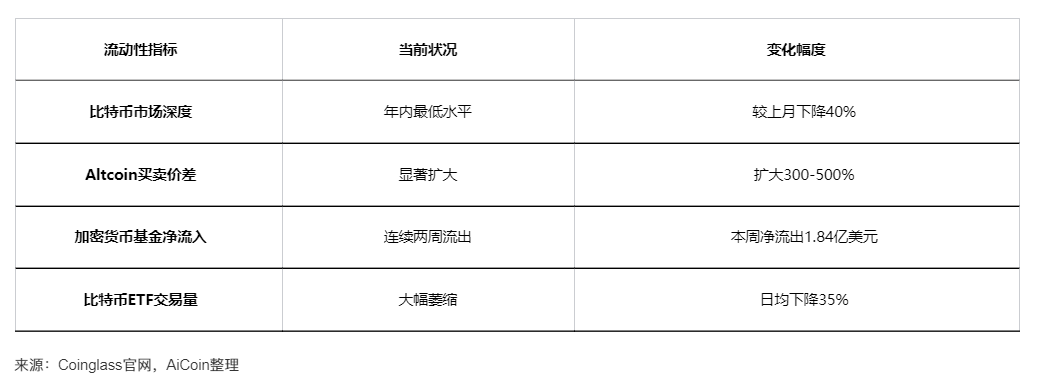In the black hole of economic data, every hesitation by the Federal Reserve triggers a bloodbath in the cryptocurrency market. The U.S. government shutdown has lasted for 32 days, marking the second-longest record in history, and this political deadlock is evolving into a full-blown economic data crisis.
Over the past month, American society has been deeply affected by the "shutdown," with the salaries of over one million military personnel becoming an issue, and about 42 million people—one-eighth of the U.S. population—facing food insecurity in November.
As the U.S. government shutdown continues, the interest rate market has begun to reprice expectations for Federal Reserve rate cuts, causing violent reactions in the cryptocurrency market: Bitcoin suddenly crashed on the evening of November 2, briefly falling below the $110,000 mark, with over 100,000 traders liquidated across the network.

I. Shutdown Deadlock and Data Vacuum
The U.S. government shutdown has entered its 32nd day, just a few days short of matching the longest government "shutdown" in U.S. history at 35 days. This political deadlock is evolving into a comprehensive economic data crisis. According to the latest statistics, over 800,000 federal employees have been forced to work without pay or take leave, and one-eighth of the U.S. population (about 42 million people) faces disruption in food stamp distribution.
● Even more seriously, key data agencies such as the U.S. Bureau of Labor Statistics and the Bureau of Economic Analysis have completely ceased operations, resulting in the November non-farm payroll report and other crucial economic indicators being unable to be released on time.
● In this data vacuum, the market can only rely on alternative indicators to gauge the economic situation. The latest private employment data from the ADP Research Institute shows that private sector employment increased by 89,000 in September, far below the market expectation of 150,000, intensifying concerns about an economic slowdown.

Federal Reserve Chairman Powell admitted in a recent speech: "Making monetary policy in a data vacuum is like driving in thick fog—we must be especially cautious." These words clearly highlight the central bank's dilemma in the current environment.
II. Changing Rate Cut Expectations and Market Turbulence
● As the government shutdown drags on, the interest rate market has begun to reprice expectations for Federal Reserve rate cuts. According to the latest data from the CME FedWatch Tool, the probability traders assign to a December rate cut has dropped from 85% a month ago to 67.8%.
This significant change reflects market skepticism about the Federal Reserve's ability to act in the absence of reliable data. Mark Cabana, head of rate strategy at JPMorgan, said: "Without reliable official data, the Fed is more likely to take a wait-and-see approach, especially given the current political uncertainty."
● The cryptocurrency market has reacted violently. Bitcoin suddenly crashed on the evening of November 2, briefly falling below the $110,000 mark, hitting a new three-week low.

● Ethereum was not spared either, dropping more than 7% and falling below the $3,900 support level.

● Even more concerning is the scale of leveraged liquidations. The total liquidation amount across the network in 24 hours reached $126 million, with 77.55% being long positions. This liquidation pattern indicates that the market's optimistic short-term outlook is being brutally purged. "When liquidity dries up and leverage piles up, any disturbance can trigger a chain reaction," noted a GSR Markets analyst. "The current market structure is exceptionally fragile."
III. Analysis of Current Crypto Market Liquidity
● A closer look at the liquidity situation in the cryptocurrency market reveals a more complex picture. Bitcoin's market depth has fallen to its lowest level since January this year, meaning large trades are more likely to trigger sharp price swings.
● In terms of capital flows, crypto investment products saw a net outflow of $184 million over the past week, marking the second consecutive week of net outflows. Meanwhile, the average daily trading volume of Bitcoin ETFs has dropped by 35%, indicating a clear cooling of institutional participation.
● On-chain data is equally discouraging. Glassnode data shows that exchange Bitcoin balances increased by 120,000 coins in the past week, indicating a growing willingness among investors to sell. At the same time, the total supply of stablecoins continues to shrink, further squeezing the market's purchasing power.

IV. Expert Opinions and Market Sentiment
Faced with this complex situation, market experts are clearly divided.
● "Bear Market" Proponents: Former Genesis Trading derivatives head Joshua Lim believes, "The government shutdown is just a surface issue; the deeper problem is the global liquidity cycle turning. As a high-risk asset, cryptocurrency will be the first to bear the brunt of capital outflows."
● "Opportunity" Supporters: Pantera Capital CIO Joey Krug holds a different view: "Every time the market ignores fundamentals in a panic, it's a great opportunity for long-term positioning. Bitcoin's scarcity and blockchain's real-world applications won't change because of a government shutdown."
● "Neutral Observers": Grayscale Head of Research Zach Pandl said, "In the current environment, predicting short-term trends is nearly impossible. The wise approach is to maintain cautious positions and wait for the political deadlock to resolve and data to return to normal."
Market sentiment indicators clearly reflect this divergence. The Crypto Fear & Greed Index has now dropped to 35, in the "fear" range, a significant deterioration from 68 a month ago. The volatility skew in the options market also shows that investors are actively buying downside protection, with concerns over potential downside risks rising sharply.
V. Potential Risks and Future Trends
Looking ahead, investors need to closely monitor several key risk points and market trends.
● The primary risk remains the duration of the government shutdown. If, as Vice President Vance suggested, the shutdown lasts until late November, the damage to the economy and markets will further expand. At that point, not only will consumer confidence be hit, but business investment decisions will also be forced to delay, potentially triggering a broader economic slowdown.
● The second risk point lies in the Federal Reserve's policy communication. On the evening of November 3, New York Fed President Williams will deliver an important speech, and the market will look for clues on the Fed's decision-making approach in a data vacuum. Any hawkish remarks could further dampen rate cut expectations and put additional pressure on risk assets.
● The third risk comes from the structure of the cryptocurrency market itself. Leverage remains high, and if prices fall further, it could trigger even larger-scale cascading liquidations.
Based on the current situation, we present the following scenario analysis for the market's future direction:

Core Tracking Indicators:
● Progress of the U.S. Government Shutdown: The Senate will attempt to pass a temporary funding bill again on the evening of November 3
● Federal Reserve Officials' Speeches: Several officials, including Williams and Harker, will speak this week
● On-chain Data Changes: Focus on changes in exchange balances and stablecoin supply trends

As the U.S. government shutdown approaches a historic record, the cryptocurrency market is facing a severe liquidity test. In this moment full of uncertainty, staying calm, strictly controlling leverage, and closely monitoring macro trends may be the best strategies for investors.
